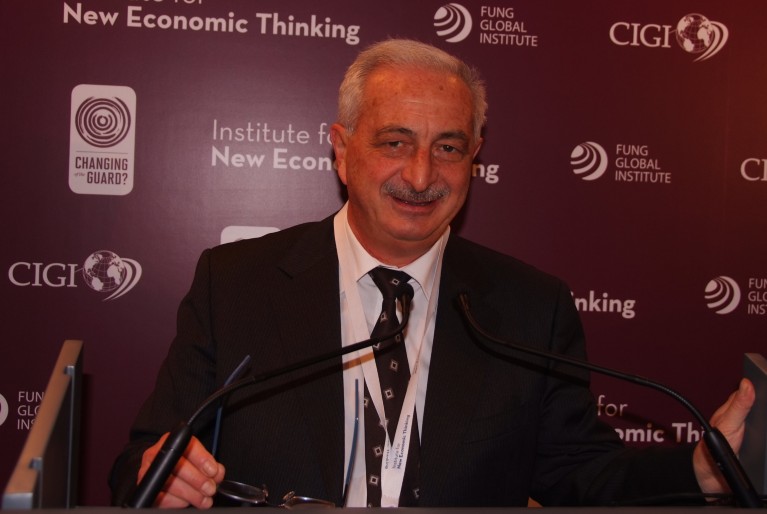Credit: NASA.
For most of his career, Luciano Pietronero has had little interest in economics. The 71-year-old has spent most of his life studying condensed matter physics, which he taught at the universities of Groningen and Rome after working in industry in the USA and Switzerland. Now, as president of the Enrico Fermi Center for Study and Research in Rome, which specializes in interdisciplinary research on complex systems, he is combining physics with economics to develop models that forecast long-term economic growth1,2, in high demand as governments plan unprecedented investments to recover from the pandemic and make their economies greener. Pietronero’s work has caught the attention of the European Commission and the World Bank, with which the Fermi institute collaborates. We asked how his models work, and how Italy can make the most out of the research and development cash from the European Union’s recovery fund.
How did you get into economics from physics?
I love complexity, not just in physics. I consider the cell as the most fascinating and complex system on the planet. The economy is also a very complex system, where people, products, money interact with each other. I tried approaching some economic problems as if they were physics problems. My models do not claim to solve the major economic issues, but they can inspire government decisions.
Your model is based on the concept of ‘economic fitness’. What does it mean?
It is an indicator that measures a country’s competitiveness on the basis of the versatility and complexity of the products it exports. We use publicly available data and apply a mathematical algorithm inspired by the one that Google uses to rank webpages. In our case, we rank countries and economic sectors within countries. This way we provide quantitative and scientifically verifiable information that is complementary to the financial information conveyed by the Gross Domestic Product, and is more closely linked to the intrinsic production capacity of a country. Any increase in fitness corresponds to an increase in the complexity of the production system, which is the real engine of growth, and will be key for recovery after the pandemic.

Luciano Pietronero
According to this model, on what sectors should Italy bet when using funds from the EU ‘Next Generation’ plan?
We can nail down opportunities and risks that are not so evident through traditional analysis. For example, Italy’s competitiveness on information and communication technologies is now quite low, but we predict that with the right investments in five years it could become one of the top ten countries in the field. We can go into more details and identify trajectories at the level of individual products. For example, our analysis tells us that Italy has good odds in radar technologies. The biotech sector has also great potential, partly because it is a by-product of a public health sector that is in good shape. The model also tells us that southern Italy is key. The north is already highly competitive, but the whole country can only become more competitive if the south grows too. In the South, renewable energy and technologies for agriculture have a promising fitness.
The so-called Piano Amaldi, mentioned in national recovery and resilience plan (PNRR), puts great emphasis on investments on basic research as an engine of growth. Do you agree?
The idea that economic growth comes from basic research alone does not make much sense to me. I’ll give you an example. The light emitted by a country at night is an excellent index of GDP, but it does not mean that I earn more money by turning on the light. If I have more money I turn on the light more, but not the other way around. Similarly, successful countries have a strong basic research, but basic research alone does not make countries successful. You also need incentives for technology transfer, and an industrial system that is ready to apply the research.
Italy does not have a strong tradition in industrial research. Why?
Italy has few large companies, and this is a limitation because they are the ones that do research. I believe that the state should primarily fund research and innovation, because for Italian industries it costs too much. Industries can then transform innovation into products and new markets. But first Italy needs to grow a culture of technology transfer, by promoting respect and cohesion between research and enterprises. We spend €300,000 to train each PhD, and let the best ones go away. We have to keep them here, and one way to do it would be to help them set up companies and startups.

